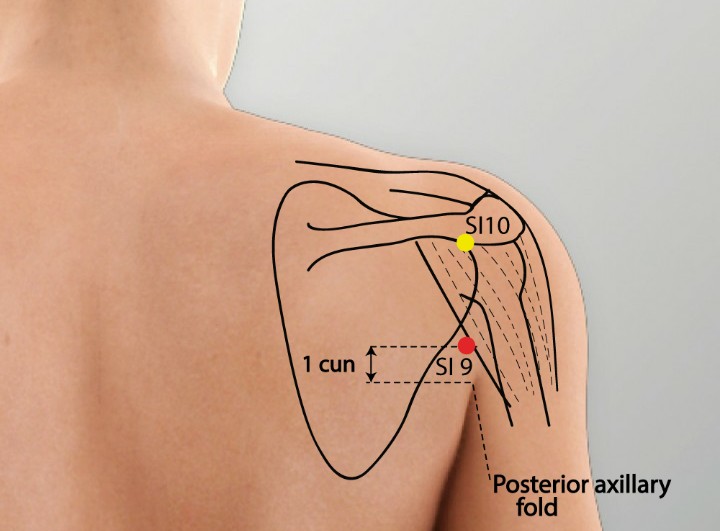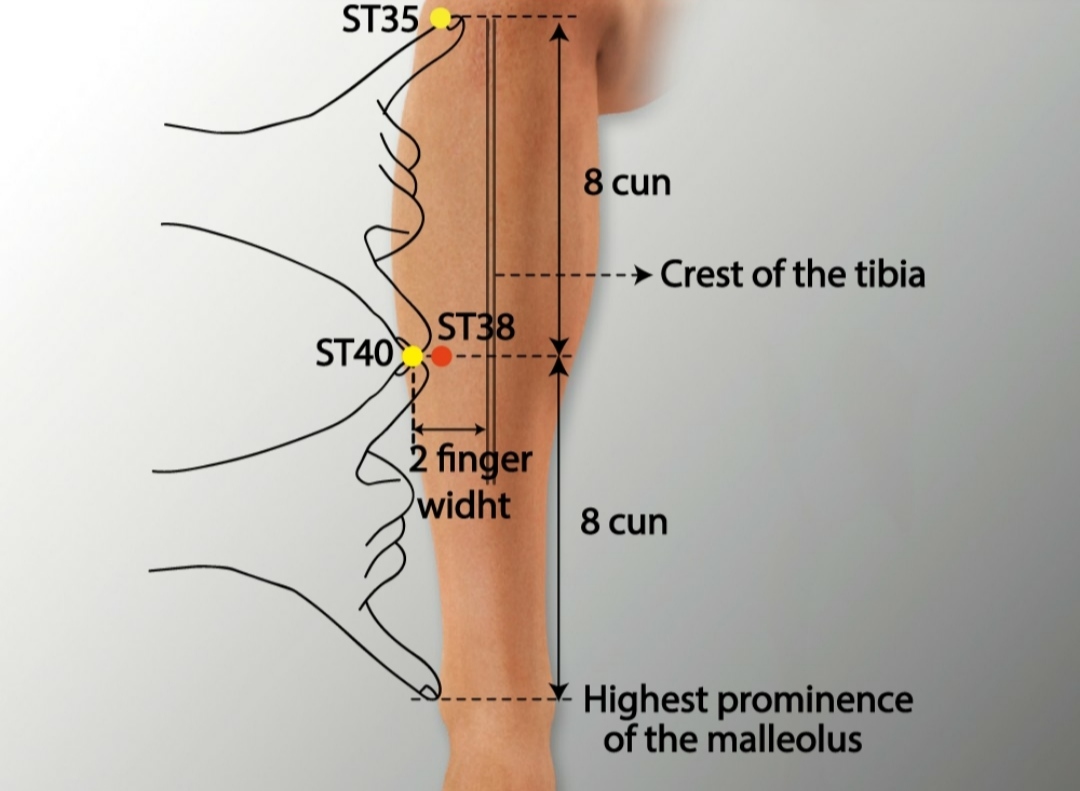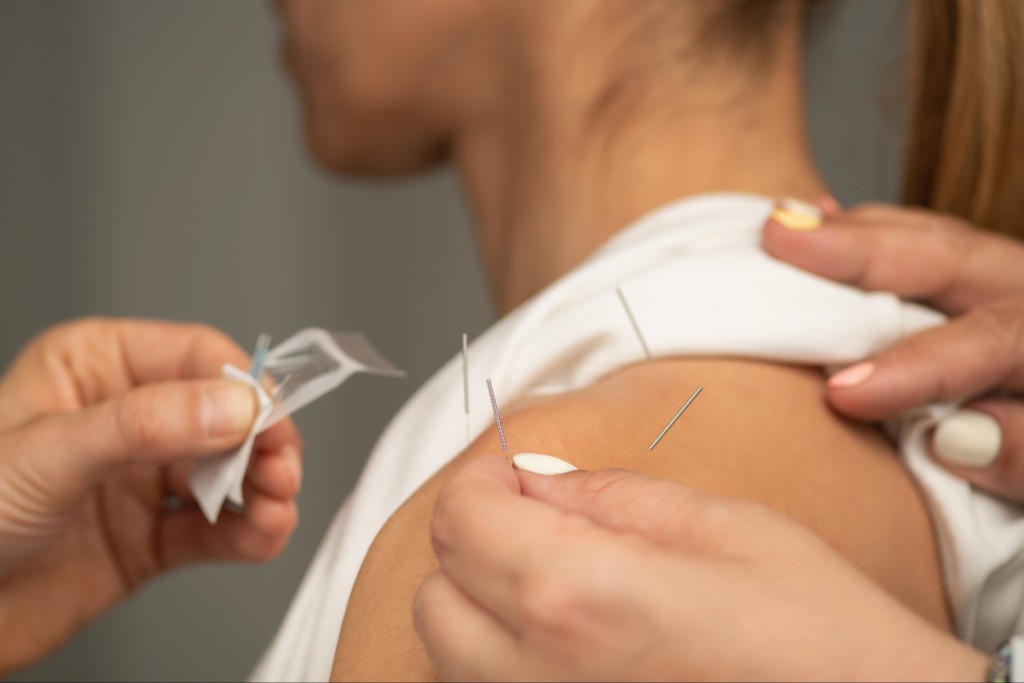Shoulder Impingement and Acupuncture Treatment in Tokyo
Shoulder impingement is a common musculoskeletal condition that affects millions of people worldwide, causing pain, restricted movement, and reduced quality of life. While conventional treatments like physical therapy, medications, and surgery are often recommended, acupuncture has emerged as a promising complementary therapy for managing shoulder impingement. This detailed article explores the causes, symptoms, and mechanisms of shoulder impingement, delves into how acupuncture can effectively treat this condition, highlights key acupoints used in treatment, and provides insights into integrating acupuncture into a holistic recovery plan. By the end, you’ll have a thorough understanding of shoulder impingement and how acupuncture can play a pivotal role in alleviating pain and restoring function.
- Understanding Shoulder Impingement
- What is Shoulder Impingement?
- Causes of Shoulder Impingement
- Symptoms of Shoulder Impingement
- Diagnosis of Shoulder Impingement
- Conventional Treatments for Shoulder Impingement
- Acupuncture for Shoulder Impingement
- How Acupuncture Treats Shoulder Impingement
- Scientific Evidence Supporting Acupuncture for Shoulder Impingement
- Key Acupoints for Shoulder Impingement
- Benefits of Acupuncture for Shoulder Impingement
- Integrating Acupuncture into a Holistic Treatment Plan
- What to Expect During Acupuncture Treatment
- Potential Risks and Considerations
- Conclusion
Understanding Shoulder Impingement
What is Shoulder Impingement?
Shoulder impingement, also known as subacromial impingement syndrome, occurs when the tendons, muscles, or bursa in the shoulder become compressed or irritated as they pass through the narrow space beneath the acromion (a bony projection of the shoulder blade). This compression typically affects the rotator cuff tendons or the subacromial bursa, leading to inflammation, pain, and restricted movement.
Maybe You Need:
The shoulder joint is a complex ball-and-socket structure that allows for a wide range of motion. However, this mobility comes at the cost of stability, making the shoulder prone to injuries and conditions like impingement. The subacromial space, where impingement occurs, is a small area between the head of the humerus (upper arm bone) and the acromion. Any factor that narrows this space—such as inflammation, structural abnormalities, or repetitive overhead movements—can lead to impingement.

Causes of Shoulder Impingement
Shoulder impingement can result from a variety of factors, including:
- Repetitive Overhead Activities: Sports like swimming, tennis, or volleyball, as well as occupations involving frequent overhead motions (e.g., painting or construction), can strain the shoulder and lead to impingement over time.
- Poor Posture: Forward head posture or rounded shoulders can alter shoulder mechanics, reducing the subacromial space and increasing the risk of impingement.
- Structural Abnormalities: Some individuals have a naturally narrow subacromial space or an abnormally shaped acromion (e.g., hooked acromion), which predisposes them to impingement.
- Rotator Cuff Weakness: Weak or imbalanced rotator cuff muscles can fail to stabilize the humeral head, causing it to migrate upward and compress structures in the subacromial space.
- Injury or Trauma: A fall or direct blow to the shoulder can cause inflammation or damage to the rotator cuff or bursa, triggering impingement symptoms.
- Age-Related Changes: As we age, tendons lose elasticity, and degenerative changes in the shoulder (e.g., bone spurs or arthritis) can narrow the subacromial space.
Symptoms of Shoulder Impingement
The symptoms of shoulder impingement typically develop gradually and may include:
- Pain: A dull ache or sharp pain in the shoulder, especially when lifting the arm overhead, reaching behind the back, or sleeping on the affected side.
- Restricted Range of Motion: Difficulty performing tasks like combing hair, putting on a jacket, or throwing a ball.
- Weakness: Reduced strength in the shoulder, particularly during overhead or pushing movements.
- Night Pain: Discomfort that worsens at night, disrupting sleep.
- Clicking or Popping: Sensations of grinding or catching in the shoulder during movement.
If left untreated, shoulder impingement can lead to more severe conditions, such as rotator cuff tears, chronic inflammation, or frozen shoulder (adhesive capsulitis).
Diagnosis of Shoulder Impingement
Diagnosing shoulder impingement typically involves a combination of medical history, physical examination, and imaging studies. A healthcare provider may:
- Assess the patient’s range of motion and strength.
- Perform specific tests, such as the Neer test or Hawkins-Kennedy test, to reproduce impingement symptoms.
- Order imaging, such as X-rays, ultrasound, or MRI, to rule out other conditions (e.g., rotator cuff tears or arthritis) and evaluate the shoulder’s structures.
Early diagnosis is crucial to prevent progression and guide appropriate treatment.

Conventional Treatments for Shoulder Impingement
Before exploring acupuncture, it’s important to understand the standard treatments for shoulder impingement, as acupuncture is often used as a complementary therapy alongside these approaches.
- Rest and Activity Modification: Avoiding aggravating activities, such as overhead motions, allows the inflamed tissues to heal.
- Physical Therapy: Exercises to strengthen the rotator cuff, improve posture, and restore shoulder mechanics are a cornerstone of treatment.
- Medications: Nonsteroidal anti-inflammatory drugs (NSAIDs), such as ibuprofen, can reduce pain and inflammation.
- Corticosteroid Injections: In cases of severe inflammation, injections may provide temporary relief.
- Surgery: In rare cases where conservative treatments fail, arthroscopic surgery (e.g., subacromial decompression) may be performed to widen the subacromial space.
While these treatments are effective for many patients, they may not work for everyone, and some (e.g., medications and injections) carry risks of side effects. This is where acupuncture can offer a valuable alternative or complementary approach.
Acupuncture for Shoulder Impingement
Acupuncture is a traditional Oriental medicine (TOM) practice that involves inserting thin, sterile needles into specific points on the body, known as acupoints, to restore balance and promote healing. According to TOM, health is governed by the flow of vital energy through pathways called meridians. Blockages or imbalances in Energy can lead to pain and illness. Acupuncture aims to regulate Energy, improve blood flow, and stimulate the body’s natural healing processes.
In modern terms, acupuncture is believed to work by:
- Stimulating the nervous system to release endorphins and other pain-relieving chemicals.
- Reducing inflammation by modulating immune responses.
- Improving blood circulation to promote tissue repair.
- Relaxing tight muscles and relieving tension.
Acupuncture is widely recognized as a safe and effective therapy for various pain conditions, including shoulder impingement, and is supported by a growing body of scientific research.
How Acupuncture Treats Shoulder Impingement
Acupuncture addresses shoulder impingement by targeting both the symptoms and underlying causes of the condition. Here’s how it works:
- Pain Relief: Acupuncture stimulates the release of endorphins, serotonin, and other neurotransmitters that act as natural painkillers. This can reduce the sharp or aching pain associated with shoulder impingement.
- Reducing Inflammation: By modulating the body’s inflammatory response, acupuncture can decrease swelling in the rotator cuff tendons or subacromial bursa, alleviating pressure in the subacromial space.
- Improving Blood Flow: Acupuncture enhances local circulation, delivering oxygen and nutrients to damaged tissues and promoting faster healing.
- Relaxing Muscles: Tight muscles, such as the trapezius or deltoid, often contribute to shoulder impingement. Acupuncture can relax these muscles, improving shoulder mechanics and reducing strain.
- Restoring Range of Motion: By relieving pain and muscle tension, acupuncture can help patients regain mobility and perform physical therapy exercises more effectively.
- Addressing Root Causes: In TOM, shoulder impingement may be linked to imbalances in specific meridians (e.g., Large Intestine or Lung meridians). Acupuncture aims to restore balance, addressing both local and systemic factors.

Scientific Evidence Supporting Acupuncture for Shoulder Impingement
Research supports the use of acupuncture for shoulder pain and impingement. For example:
- A 2018 systematic review in the Journal of Pain Research found that acupuncture significantly reduced pain and improved function in patients with shoulder impingement compared to sham acupuncture or no treatment.
- A 2020 study in Acupuncture in Medicine showed that acupuncture, combined with physical therapy, was more effective than physical therapy alone in reducing pain and improving shoulder mobility.
- A 2017 meta-analysis in The American Journal of Oriental Medicine concluded that acupuncture is a safe and effective treatment for chronic shoulder pain, with benefits lasting up to six months.
While more large-scale studies are needed, these findings suggest that acupuncture can be a valuable tool for managing shoulder impingement.
Key Acupoints for Shoulder Impingement
Acupuncturists select specific acupoints based on the patient’s symptoms, TOM diagnosis, and the location of pain. For shoulder impingement, a combination of local (near the shoulder) and distal (farther from the shoulder) acupoints is typically used to address pain, inflammation, and restricted movement. Below are some commonly used acupoints for shoulder impingement, along with their locations and therapeutic effects.
Local Acupoints (Near the Shoulder)
- LI 15 (Jianyu)
- Location: On the shoulder, in the depression anterior and inferior to the acromion when the arm is abducted.
- Effect: Relieves shoulder pain, improves range of motion, and benefits the shoulder joint. Often used for impingement and rotator cuff issues.
- TOM Perspective: Activates the Large Intestine meridian, dispels wind, and promotes Energy flow in the shoulder.
- SI 9 (Jianzhen)
- Location: Posterior to the shoulder, 1 cun (about one thumb’s width) above the posterior axillary crease when the arm is adducted.
- Effect: Reduces pain and stiffness in the shoulder and upper arm. Effective for posterior shoulder pain.
- TOM Perspective: Regulates Energy in the Small Intestine meridian and clears local obstructions.

- TE 14 (Jianliao)
- Location: On the posterior shoulder, in the depression posterior and inferior to the acromion when the arm is abducted.
- Effect: Alleviates shoulder pain and improves mobility. Often paired with LI 15 for comprehensive shoulder treatment.
- TOM Perspective: Benefits the Triple Energizer meridian and disperses stagnation in the shoulder.
- LI 16 (Jugu)
- Location: On the upper shoulder, in the depression between the acromial end of the clavicle and the scapular spine.
- Effect: Relieves pain and promotes circulation in the shoulder region.
- TOM Perspective: Activates the Large Intestine meridian and benefits the joint.
Distal Acupoints (Farther from the Shoulder)
- LI 4 (Hegu)
- Location: On the hand, in the webbing between the thumb and index finger.
- Effect: A powerful point for pain relief throughout the body, including the shoulder. Also reduces inflammation and promotes relaxation.
- TOM Perspective: A command point of the Large Intestine meridian, it clears heat, dispels wind, and regulates Energy.
- LU 7 (Lieque)
- Location: On the forearm, 1.5 cun above the wrist crease, in the depression proximal to the styloid process of the radius.
- Effect: Benefits the upper body, including the shoulder, neck, and chest. Helps with pain and restricted movement.
- TOM Perspective: A key point of the Lung meridian, it releases the exterior and regulates Energy flow.
- ST 38 (Tiaokou)
- Location: On the lower leg, 8 cun below the knee, midway between the tibialis anterior muscle and the extensor digitorum longus.
- Effect: A distal point specifically used for shoulder pain and frozen shoulder. Improves shoulder mobility.
- TOM Perspective: Regulates the Stomach meridian and benefits the shoulder through meridian connection
- SI 3 (Houxi)
- Location: On the hand, in the depression proximal to the head of the fifth metacarpal bone when the hand is clenched.
- Effect: Relieves pain and stiffness in the shoulder, neck, and upper back.
- TOM Perspective: A key point of the Small Intestine meridian, it benefits the shoulder and regulates the Du (Governing) meridian.

In addition to standardized acupoints, acupuncturists often use “Ashi” points—tender or trigger points found during palpation around the shoulder. These points are needled to directly target areas of pain or muscle tension, providing localized relief.
The choice of acupoints depends on the patient’s specific symptoms and TOM diagnosis. For example:
- If the pain is primarily anterior, LI 15 and LI 4 may be prioritized.
- For posterior shoulder pain, SI 9 and TE 14 are often used.
- If the patient has systemic symptoms (e.g., fatigue or stress), distal points like LI 4 or LU 7 may be included to balance the body.
A typical acupuncture session lasts 20–30 minutes, with needles inserted to varying depths depending on the acupoint. Treatments are usually administered 1–2 times per week for 4–8 weeks, depending on the severity of the condition. Electroacupuncture (using mild electrical stimulation) or moxibustion (burning mugwort near acupoints) may be added to enhance effects.
Benefits of Acupuncture for Shoulder Impingement
Acupuncture offers several advantages for patients with shoulder impingement:
- Non-Invasive: Unlike surgery or injections, acupuncture is minimally invasive and carries a low risk of complications.
- Fewer Side Effects: Compared to NSAIDs or corticosteroids, acupuncture has minimal side effects when performed by a qualified practitioner.
- Holistic Approach: Acupuncture addresses both physical symptoms and underlying imbalances, promoting overall well-being.
- Complementary Therapy: Acupuncture can be combined with physical therapy, exercise, or medications for enhanced results.
- Customizable: Treatments are tailored to the individual’s symptoms and needs, ensuring personalized care.
Integrating Acupuncture into a Holistic Treatment Plan
For optimal results, acupuncture should be part of a comprehensive treatment plan for shoulder impingement. Here are some strategies to complement acupuncture:
- Physical Therapy: Work with a physical therapist to strengthen the rotator cuff, improve posture, and correct shoulder mechanics. Acupuncture can enhance the effectiveness of exercises by reducing pain and muscle tension.
- Posture Correction: Practice good posture and use ergonomic adjustments at work or home to prevent further impingement.
- Exercise and Stretching: Incorporate gentle shoulder stretches and low-impact exercises (e.g., yoga or swimming) to maintain mobility and strength.
- Lifestyle Modifications: Avoid repetitive overhead activities and take breaks during tasks that strain the shoulder.
- Nutrition and Hydration: A balanced diet rich in anti-inflammatory foods (e.g., omega-3s, fruits, and vegetables) can support tissue healing.
- Stress Management: Chronic stress can exacerbate pain and muscle tension. Techniques like meditation, deep breathing, or acupuncture itself can promote relaxation.
What to Expect During Acupuncture Treatment
If you’re considering acupuncture for shoulder impingement, here’s what to expect:
- Initial Consultation: The acupuncturist will review your medical history, assess your symptoms, and perform a TOM diagnosis (e.g., pulse and tongue examination).
- Treatment Session: You’ll lie on a comfortable table while the acupuncturist inserts thin needles into selected acupoints. You may feel a mild tingling or warmth, but the process is generally painless.
- Post-Treatment: Some patients feel immediate relief, while others notice gradual improvements over several sessions. Mild soreness or bruising at needle sites is rare but normal.
- Follow-Up: The acupuncturist will recommend a treatment schedule based on your progress, typically adjusting acupoints or techniques as needed.
Always choose a licensed and experienced acupuncturist to ensure safe and effective treatment. Check credentials and ask about their experience with shoulder conditions.

Potential Risks and Considerations
Acupuncture is generally safe, but there are a few considerations:
- Mild Side Effects: Temporary soreness, bruising, or fatigue may occur.
- Contraindications: Acupuncture may not be suitable for patients with bleeding disorders, infections, or certain medical conditions. Consult your doctor before starting treatment.
- Not a Cure-All: While acupuncture can significantly reduce symptoms, it may not address structural issues (e.g., bone spurs) that require surgical intervention.
Discuss acupuncture with your healthcare provider to ensure it’s appropriate for your condition.
Conclusion
Shoulder impingement is a painful and limiting condition that can significantly impact daily life. While conventional treatments like physical therapy and medications are effective for many, acupuncture offers a safe, non-invasive, and holistic alternative for managing pain, reducing inflammation, and restoring shoulder function. By targeting key acupoints like LI 15, SI 9, and LI 4, acupuncture addresses both local symptoms and systemic imbalances, providing comprehensive relief.
Whether used alone or alongside other therapies, acupuncture can play a pivotal role in your recovery from shoulder impingement. By combining acupuncture with physical therapy, lifestyle changes, and stress management, you can achieve lasting improvements in shoulder health and overall well-being. If you’re struggling with shoulder pain, consult a qualified acupuncturist to explore this time-tested therapy and take the first step toward a pain-free future.
Fuji Wellness:
- Address: 132-0031 Matsushima 1-chome, 21-14, Tokyo, Japan
- Chat with us: Click here
- Email: sunnyphamsensei@gmail.com






